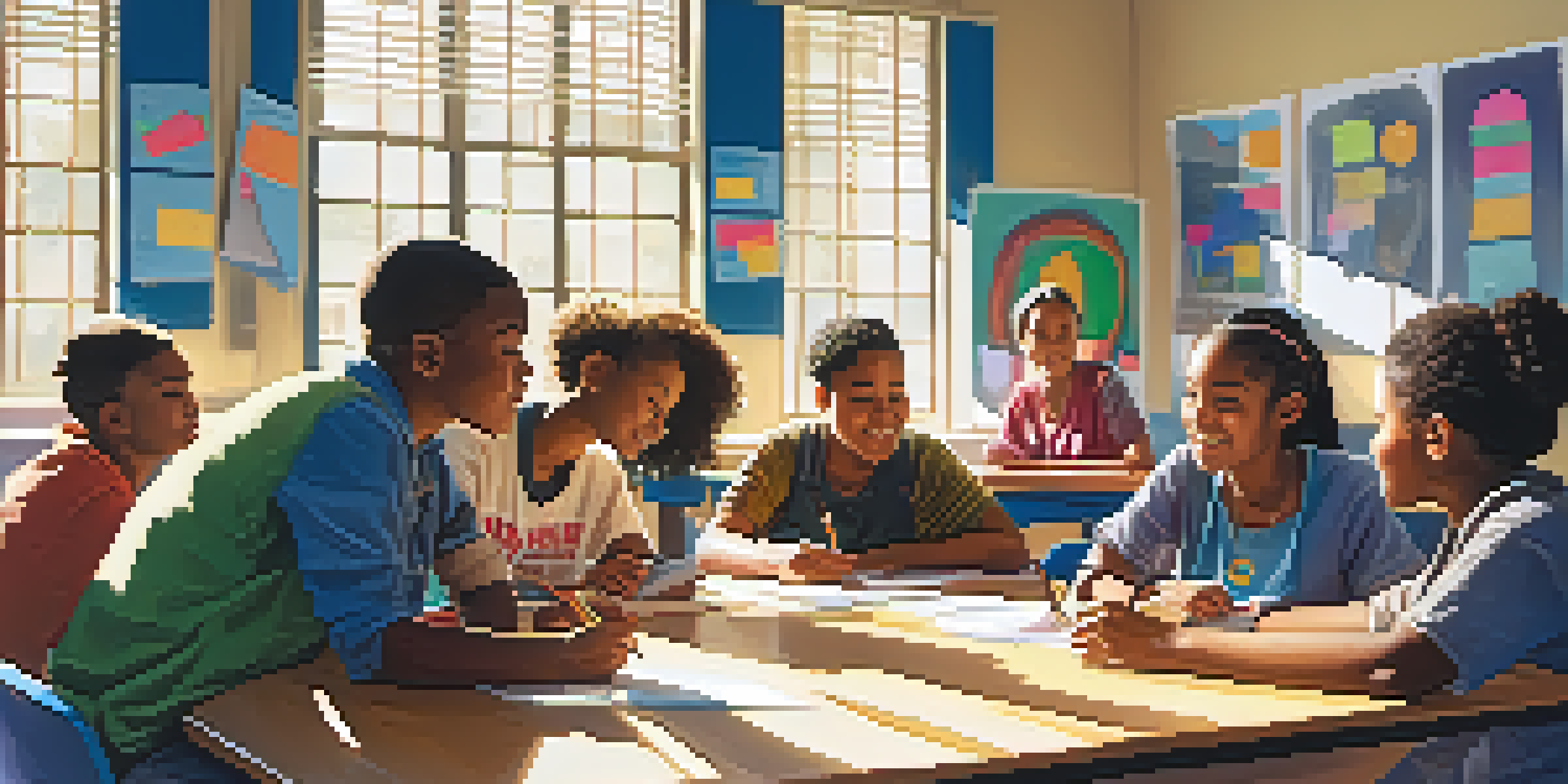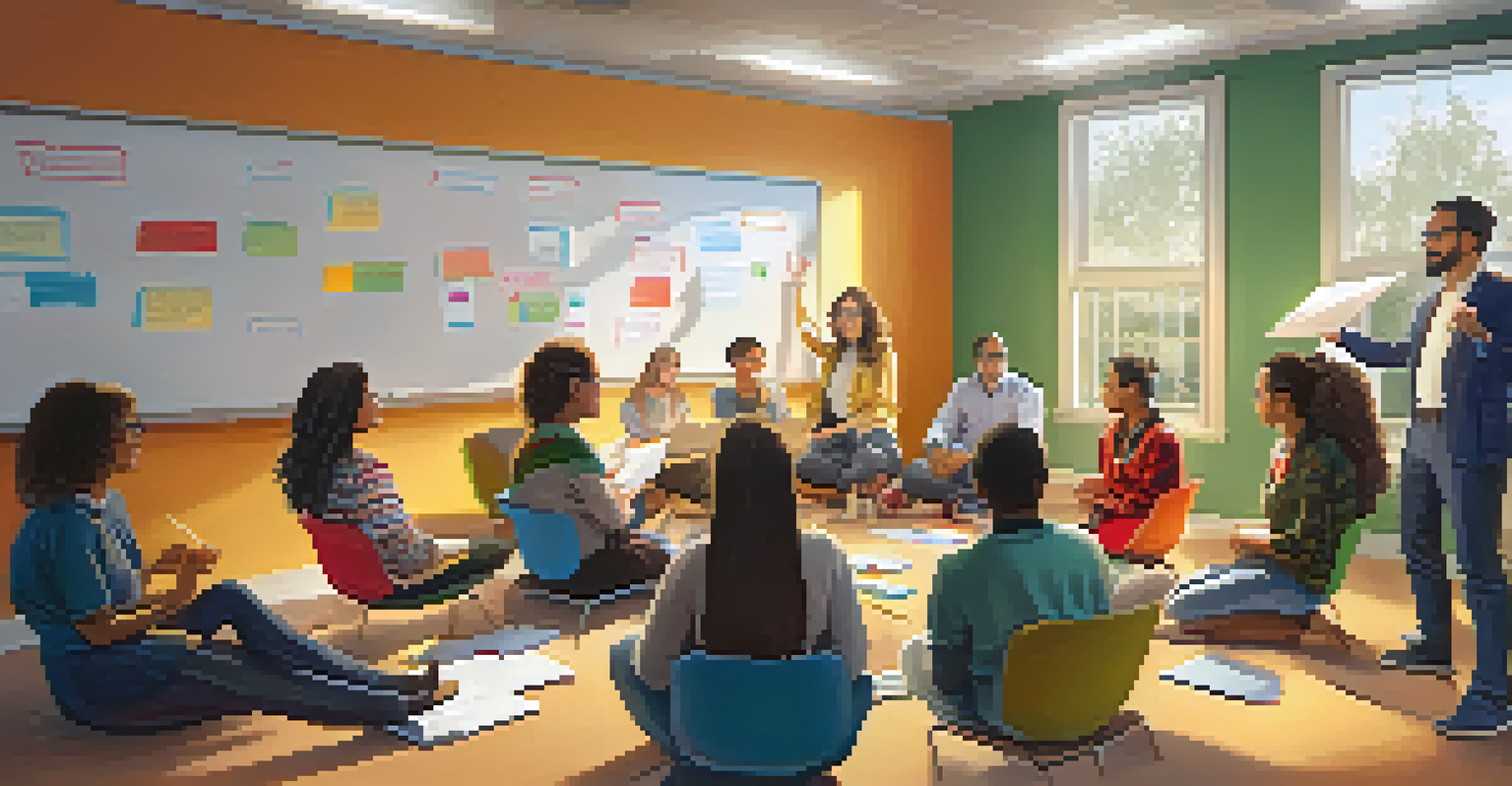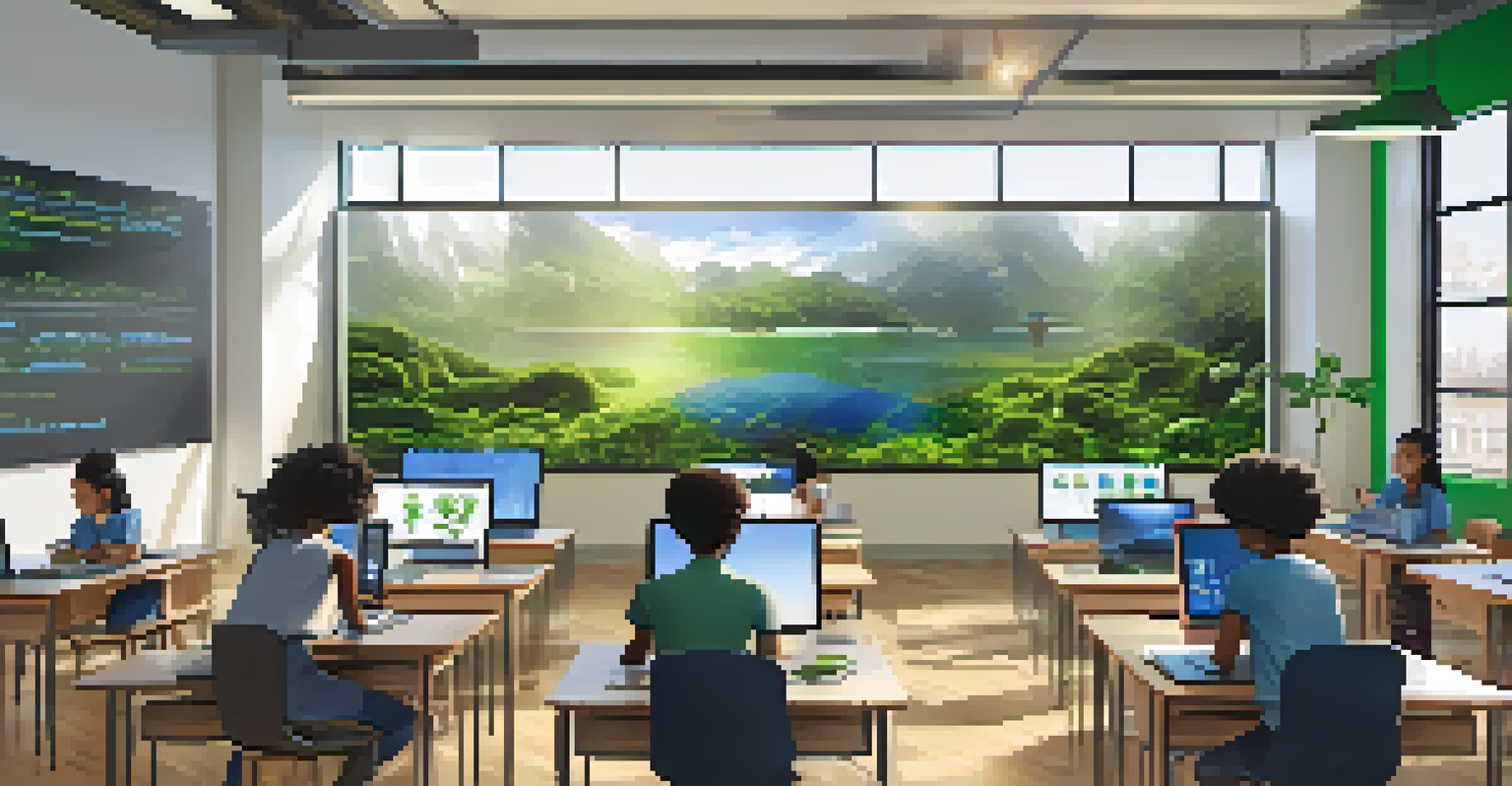The Role of Teachers in Student-Centered Learning

Defining Student-Centered Learning in Today's Classrooms
Student-centered learning shifts the focus from the teacher to the students. In this approach, students take an active role in their education, engaging with the material in ways that resonate with their interests and learning styles. By placing learners at the heart of the educational experience, we foster greater ownership and motivation.
Students don’t care how much you know until they know how much you care.
This method contrasts with traditional models where teachers are the primary source of knowledge. Instead, educators act as facilitators, guiding students to ask questions and explore topics deeply. The goal is to create an environment where students feel empowered to take charge of their learning journey.
Understanding this concept is crucial for educators aiming to adapt to contemporary pedagogical practices. By embracing student-centered learning, teachers can better prepare students for real-world challenges, encouraging critical thinking and collaboration.
The Teacher's Role as a Facilitator and Guide
In a student-centered classroom, teachers transition from being the sole authority to facilitators of learning. This shift encourages educators to create opportunities for students to lead discussions and explore subjects at their own pace. By guiding rather than dictating, teachers help learners develop essential skills like problem-solving and independent thinking.

For instance, rather than lecturing on a topic, a teacher might pose open-ended questions, prompting students to investigate and debate ideas. This style fosters an environment where students feel safe to express their thoughts and opinions, enhancing their confidence. It’s about nurturing curiosity and promoting dialogue.
Empowering Students in Learning
Student-centered learning encourages students to take an active role in their education, fostering ownership and motivation.
Ultimately, the teacher's role becomes one of support and encouragement, making it vital to establish trusting relationships with students. When students feel valued and understood, they are more likely to engage in their learning process actively.
Creating a Safe and Inclusive Learning Environment
A cornerstone of student-centered learning is creating an inclusive and safe environment. Teachers must ensure that every student feels welcomed and valued, regardless of their background or abilities. This inclusivity promotes a sense of belonging, which is essential for effective learning.
The role of the teacher is to create the conditions for invention rather than to provide ready-made knowledge.
For example, teachers can implement group activities that celebrate diversity, allowing students to share their unique perspectives. When learners realize that their contributions matter, they are more likely to participate fully. This not only enriches the classroom experience but also teaches empathy and respect.
Moreover, a supportive environment encourages risk-taking, which is vital for learning. Students are more inclined to explore new ideas and make mistakes when they know they have a safety net, fostering resilience and growth.
Encouraging Active Participation and Collaboration
Active participation is key to student-centered learning, and teachers play a crucial role in fostering this engagement. By designing lessons that require collaboration, teachers can create dynamic interactions among students. This not only helps them learn from each other but also builds essential teamwork skills.
For instance, project-based learning allows students to tackle real-world problems together, encouraging them to brainstorm, plan, and execute solutions as a team. In these scenarios, the teacher acts as a guide, providing resources and support while allowing students to navigate their learning.
Teacher as Facilitator
In this approach, teachers transition from being the primary source of knowledge to facilitators who guide and support student exploration.
Such collaborative experiences help students develop a deeper understanding of the material. They are more likely to remember concepts when they actively engage with their peers, reinforcing the idea that learning is a shared journey.
Utilizing Technology to Enhance Learning Experiences
In today’s digital age, technology plays a vital role in student-centered learning. Teachers can leverage various tools and platforms to create interactive and personalized learning experiences. This not only caters to different learning styles but also keeps students engaged and motivated.
For example, using educational apps and online resources allows students to explore topics at their own pace and in their preferred format. Whether it's through videos, quizzes, or collaborative platforms, technology can enhance understanding and retention of information.
Moreover, technology fosters communication and collaboration among students, even outside the classroom. With tools like discussion boards and group chats, learners can continue their conversations and projects, promoting a continuous learning environment.
Fostering Critical Thinking and Problem-Solving Skills
One of the most significant roles teachers play in student-centered learning is fostering critical thinking and problem-solving skills. By encouraging students to ask questions and analyze information, educators help them become independent thinkers. This skill set is essential for success in both academic and real-life scenarios.
Teachers can facilitate this process by presenting complex problems or scenarios that require students to apply their knowledge creatively. For instance, case studies or simulations can challenge students to think critically and develop solutions collaboratively.
Promoting Collaboration and Inclusivity
Creating a safe and inclusive environment enhances active participation and collaboration, enriching the learning experience for all students.
As students navigate these challenges, they learn to evaluate different perspectives and make informed decisions. This empowerment not only boosts their confidence but also prepares them for future challenges, both in and out of the classroom.
Assessing Student Progress in a Student-Centered Approach
Assessment in a student-centered learning environment differs significantly from traditional methods. Instead of relying solely on standardized tests, teachers use various assessment techniques to gauge student understanding and progress. This holistic approach provides a more accurate picture of a student's abilities and growth.
For example, formative assessments like quizzes, reflections, and peer evaluations allow teachers to gather insights into student learning continuously. These assessments encourage students to take ownership of their progress and identify areas for improvement.

Moreover, involving students in the assessment process fosters self-reflection and goal-setting. When students understand their strengths and weaknesses, they can work towards their learning objectives more effectively, creating a cycle of continuous improvement.